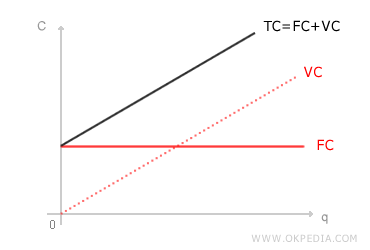Variable Cost
Variable cost refers to the portion of total cost that fluctuates with production output. These costs are directly tied to the level of input utilization in the short run. Common examples include labor, raw materials, and energy. In the Cartesian diagram below, variable costs are represented by the VC line. This line rises as production increases and drops to zero when no output is produced.

In the short run, a company can scale up production only by adjusting its use of variable inputs, as its technology and production capacity (fixed costs) remain unchanged. For example, if demand spikes unexpectedly, the firm can increase output using its existing facilities (technology) rather than expanding its infrastructure. There wouldn’t be enough time to invest in new equipment or upgrade production capacity. Instead, higher output requires greater consumption of raw materials, labor, energy, and other inputs—costs that fluctuate in direct proportion to production volume, making them variable costs.
